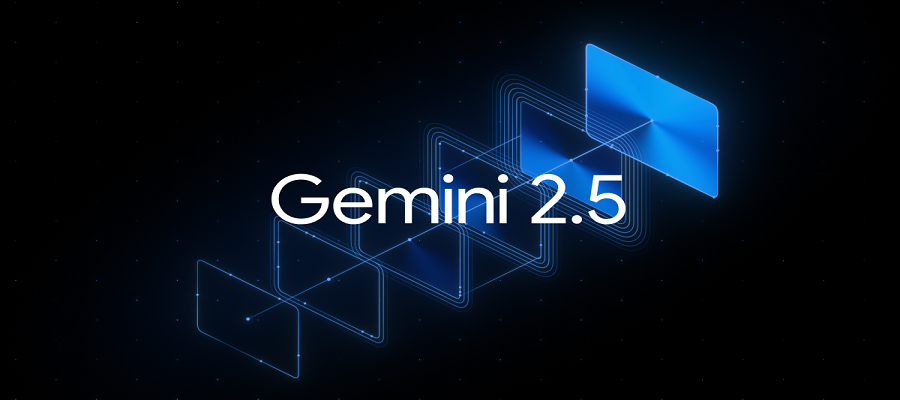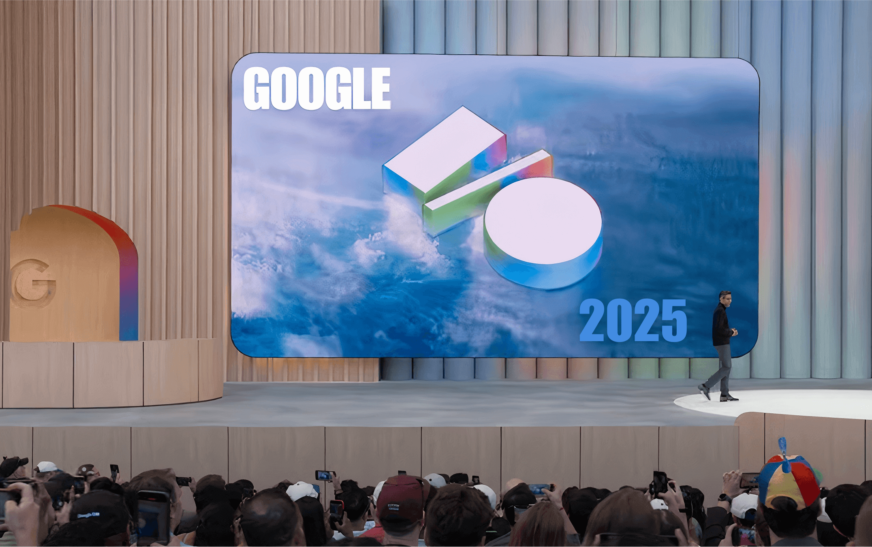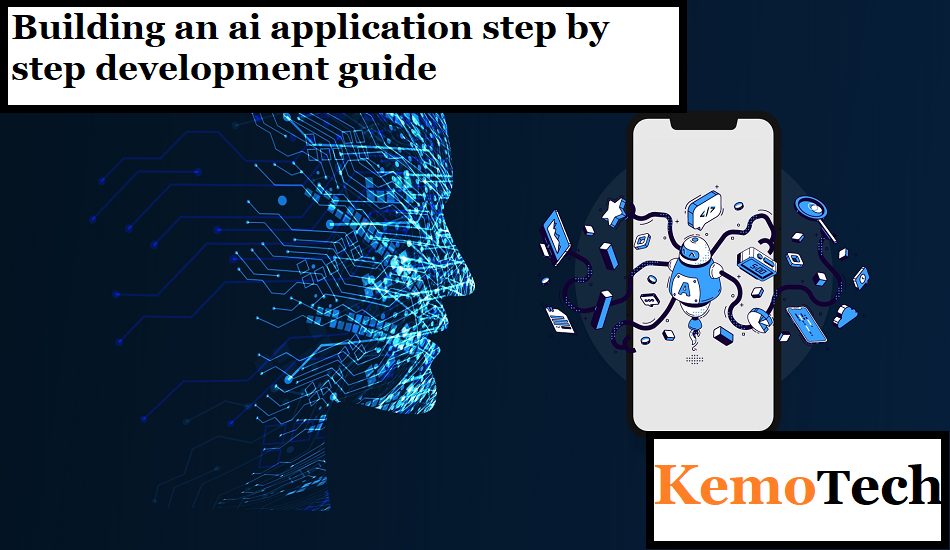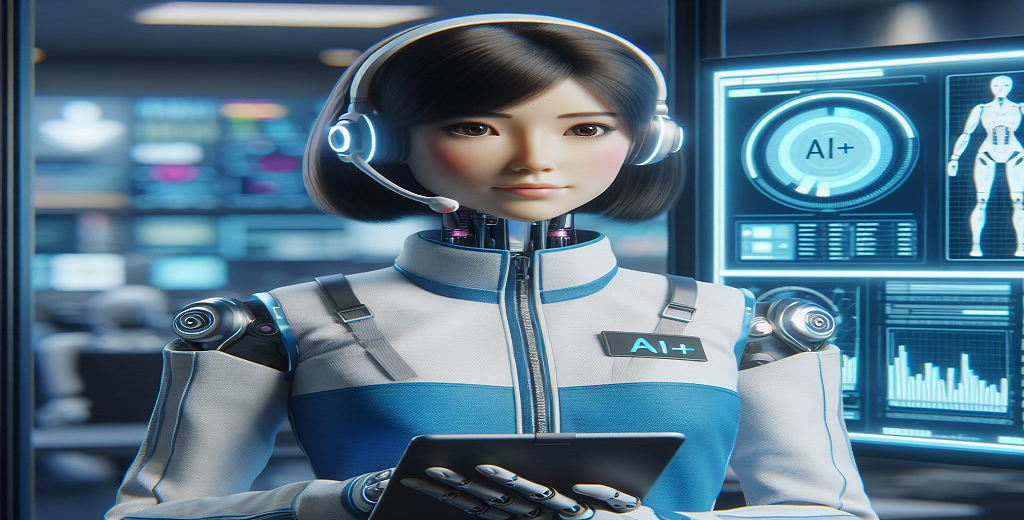With more than 100 ground-breaking announcements, Google I/O 2025 was its most ambitious event to date and garnered international attention. The conference placed a strong emphasis on powerful developer tools, immersive digital experiences and artificial intelligence (AI). Google displayed a daring vision with its futuristic XR smart glasses and improved Search powered by Gemini. AI is becoming the new center of Google’s ecosystem not merely a feature.
Held at the Shoreline Amphitheatre and streamed globally, the event highlighted how deeply AI is now integrated into Google’s services. CEO Sundar Pichai emphasized that we are entering a new era where helpful AI is foundational. Every product from Gmail to Android was reimagined through this lens. Google I/O 2025 wasn’t just a tech conference it was a glimpse into a smarter AI-driven future.
Here’s a comprehensive breakdown of the most important updates from Google I/O 2025:
Gemini 2.5 and the AI Revolution

The Gemini 2.5 model, the most recent and sophisticated version of Google’s artificial intelligence technology, is the foundation of the 2025 plan. Through better knowledge and intelligent interactions, this strong artificial intelligence system is intended to greatly improve the features of Google’s products. The business unveiled two main components of its innovative AI architecture to handle a range of customer demands and applications:
- Gemini 2.5 Pro: Enhanced with a powerful new “Deep Think” mode, this model excels at advanced reasoning and maintaining understanding over much longer contexts. It is specially designed to tackle complex, detail-heavy tasks such as programming, in-depth research and sophisticated problem-solving.
- Gemini Flash: This is a lighter, faster variant of the Gemini model, optimized specifically for real-time applications. Built to deliver quick and efficient responses, it excels in mobile and web environments where speed and smooth user interaction are critical.
When combined, these models are radically changing how AI interacts with people across Google’s wide variety of services. From increasing efficiency in commonplace applications to augmenting capacities in artistic instruments, they provide more intelligent, expedient and customized experiences in every way.
AI Mode in Google Search
Perhaps the most headline-worthy innovation at Google I/O 2025 was the release of the new “AI Mode” in Search, which turns the conventional search engine into a highly interactive and conversational experience driven by the Gemini AI system. This creative mode redefines our interaction with information online by providing users with chatbot-style replies, greater contextual knowledge and the opportunity to immediately execute difficult tasks straight inside the search interface.
While this is an amazing step forward, it’s worth noting that only users of the new AI Ultra Plan, which costs $250 a month, may access some of the most cutting-edge capabilities. Discussions about the inclusiveness and accessibility of these state-of-the-art AI technologies were triggered by this subscription model which raised concerns about how broadly such potent capabilities would be accessible to regular people.
Project Mariner
With the help of advanced AI and data analytics, Google’s big plan for Project Mariner is to change the way the environment is protected. Mariner aims to provide accurate, real-time information about changes and trends in the environment by using huge files from satellite images, climate monitors and marine study. By giving experts and lawmakers with useful data, this project helps them understand and combat climate problems.
Fundamentally, Project Mariner uses predictive analytics and machine learning algorithms to detect pollution, evaluate ocean health and more precisely anticipate natural catastrophes. In order to develop a cohesive strategy for sustainability, the project also aims to promote cooperation between governments, academics and environmental groups. Google aims to promote significant solutions for protecting the planet’s ecosystems through these initiatives.
Project Astra: A Universal AI Assistant
Based on the potent Gemini architecture, Google unveiled Project Astra, their next-generation AI helper. From handling complicated scheduling and real-time reminders to assisting with in-depth research and creative brainstorming, Astra is designed to proactively help users across several devices and a broad variety of activities.
Project Astra provides a preview of the near future, when intelligent personal assistants will be far more conversational, intuitive, and effortlessly incorporated into our everyday digital lives, even if they are still in the early stages of research. This invention has the potential to revolutionize our interactions with technology by making help more contextually aware and natural than before.
Veo 3: Text-to-Video Like Never Before
Video generation technology made a significant leap forward with the unveiling of Veo 3 Google’s latest and most advanced text-to-video AI tool. With Veo 3, users can effortlessly transform simple text prompts into fully generated video clips, now enhanced with improved realism, higher resolution and greater creative control.
- Realistic visuals
- Dynamic transitions
- AI-synchronized audio including dialogue, ambient sounds and music
Veo 3 is poised to revolutionize content creation workflows across a wide range of fields, empowering educators, marketers, filmmakers and social media influencers to produce high-quality video content more quickly and efficiently than ever before. By simplifying the video production process Veo 3 enables creators to bring their ideas to life with greater ease and creativity.
Imagen 4 AI image generator
Google’s next-generation AI image generator, Imagen 4, is a significant advancement in the production of visual content. Imagen 4’s sophisticated diffusion models enable it to accurately transform basic text prompts into breathtaking lifelike images. The model produces objects, landscapes and styled artwork with excellent realism and artistic coherence. For designers, marketers, educators and content producers this makes it an effective tool.
Imagen 4’s enhanced control over fine picture details is one of its most notable features. The creative process is now more participatory as users may modify composition, lighting and style with simple instructions. Higher-resolution outputs for professional use cases are also supported by the program.
Currently accessible on a few platforms Imagen 4 is still growing in popularity. It establishes Google as a significant force in the field of generative visual AI.
Android XR and Smart Glasses

With the release of Android XR smart glasses, Google hinted at its impending foray into the realm of Extended Reality (XR), signaling a daring advancement in immersive technology. These wearables, which are powered by the cutting-edge Gemini AI are designed to seamlessly integrate digital content with the real world. They provide real-time information, AI-driven interactions and simple controls that can be operated with voice or gesture commands.
While pricing details and release timelines have yet to be announced, this unveiling represents a significant milestone in Google’s hardware roadmap. It signals the company’s commitment to making XR a practical, everyday technology that could transform how users interact with their surroundings and digital content alike.
Stitch
Designed to effortlessly combine data from many sources, Stitch is Google’s potent new AI-driven platform allowing companies and developers to create smarter, more linked apps. It streamlines the gathering, structuring and analysis of large amounts of data, therefore optimizing data collaboration and use over time.
- Unified Data Integration: Stitch allows users to connect diverse data sources including cloud storage, databases and APIs into a single cohesive platform. This integration eliminates data silos and streamlines workflows by providing a centralized hub for all organizational data.
- Real-Time Data Sync: With Stitch’s real-time synchronization capabilities, data is updated instantly across all connected systems. This ensures that teams have access to the most current information enabling faster decision-making and more responsive applications.
- Advanced AI Analytics: Stitch leverages Google’s latest AI models to analyze integrated data, uncovering patterns, trends and actionable insights. These AI-driven analytics help businesses optimize operations, personalize user experiences and predict future outcomes more accurately.
- Developer-Friendly Tools: Stitch makes it simple for developers to create unique solutions and automate intricate data processes by providing a comprehensive range of APIs and SDKs. The technical obstacles often connected with large-scale data projects are lessened by its user-friendly interface and robust backend.
Stitch marks a significant improvement in data integration and analysis practices in companies. Stitch enables consumers to fully use their data by aggregating several datasets under one roof and enhancing them with artificial intelligence capabilities. Platforms like Stitch will become crucial for fostering innovation and competitive advantage as data continues to become increasingly important.
Google Beam: The Future of 3D Communication
Google Beam, an inventive 3D video communication platform that generates realistic, three-dimensional representations of users in virtual worlds, was introduced by Google, building on the groundwork established by its previous Project Starline. This state-of-the-art technology attempts to bridge physical distances in a manner that seems amazingly genuine making remote meetings and chats feel as engaging and natural as in-person encounters.
With an emphasis on boosting workplace communication, transforming educational experiences and raising the quality of long-distance personal conversations, Google Beam has a broad range of possible uses. Beam promises to transform how people connect across distances by giving virtual interactions a new dimension of presence and depth.
Gemini Across Google Apps
Google showcased impressive and seamless deep AI integration across its suite of popular applications, enhancing functionality and user experience. This integration brings smarter automation, personalized features and more intuitive interactions to everyday tools used by millions worldwide.
- Gmail: Now features context-aware Smart Replies that suggest relevant responses, along with AI-generated email summaries to help users quickly grasp key points. Additionally, new tone-adjustable drafting tools allow users to customize the style and mood of their messages for clearer communication.
- Google Meet: Added real-time multilingual translating features, therefore removing language barriers and increasing the accessibility of worldwide conferences. This function lets users interact easily, independent of their natural tongue thereby fostering international cooperation.
- Google Wallet: Introduced “Nearby Passes,” a cutting-edge location-based pass notification feature that automatically surfaces pertinent passes when users are nearby. Additionally, it simplified transactions and made payments easier in regional markets by launching customized payment connections starting with India.
- Google Play: Introduced new monetization options for developers, such as streamlined in-app purchase procedures that lower customer friction. Now, developers can utilize direct payment links making it simpler to increase conversions and control app income.
These upgrades promise to deliver a significantly more personalized and efficient experience, enhancing usability and productivity for everyday users. At the same time, developers gain powerful new tools and features that streamline app creation, management and monetization.
Wear OS 6
Emphasizing faster speed, better battery life and a more user-friendly interface, Wear OS 6 represents a major improvement to Google’s wristwatch operating system. Faster app launches and improved animations in the update help to provide a more fluid and responsive whole experience for consumers. With Wear OS 6, Google hopes to provide on a variety of wearable devices a flawless mix of use and design.
Additionally, Wear OS 6 brings deeper integration with Google’s AI and health services, offering smarter notifications, advanced fitness tracking and personalized health insights. The update also supports a broader ecosystem of apps and watch faces, giving users more ways to customize their experience. This release reinforces Google’s commitment to making wearable technology more useful and enjoyable in everyday life.
Android 16 and Developer Tools
With the release of Android 16, numerous enhancements were made with the intention of enhancing user customization, enhancing accessibility and boosting real-time device operation. The goal of these significant upgrades is to provide people everywhere amore customized, responsive and easy-to-use mobile experience.
- Live Updates: Introduces always-on widgets and dynamic notifications that provide real-time tracking for various activities such as package deliveries and flight statuses, keeping users constantly informed. This feature ensures important updates are delivered promptly without needing to open specific apps.
- Material 3 Design: Offers a refined and visually appealing user interface with enhanced theming options and smoother animations, creating a more cohesive and enjoyable user experience. These design improvements also focus on better accessibility and consistency across different device types.
- Privacy Enhancements: Gives consumers greater precise control over how sensitive data may be accessed by apps by introducing more robust permission controls. Secure sandboxing methods have also been enhanced to further isolate programs, secure user data and lower security threats.
On the developer front, Android Studio, Firebase and Flutter were all enhanced with significant performance improvements, advanced AI integrations, and new debugging tools. These updates are designed to streamline workflows, reduce development cycles and empower developers to build high-quality apps more efficiently.
AI in Healthcare: MedGemma and AMIE
Working together with DeepMind, Google Research has announced two ground-breaking projects that will use cutting-edge AI technologies to change the way healthcare is provided. The main goals of these programs are to make diagnoses more accurate and speed up medical study so that patient results can be improved all over the world.
- MedGemma: A powerful multimodal AI model capable of interpreting both medical images and textual data, designed to support clinical diagnostics and accelerate medical research. MedGemma helps healthcare professionals make more accurate assessments by combining diverse types of medical information.
- AMIE (AI Medical Interaction Engine): A sophisticated conversational AI system specifically developed for enhancing doctor-patient interactions. AMIE can understand and interpret symptoms, access vast medical literature for evidence-based responses and process visual inputs such as X-rays to assist in clinical decision-making.
These new developments show that AI has a lot of promise to become an important and reliable tool in healthcare settings. By improving the accuracy of diagnoses and the efficiency of patient care, AI has the potential to alter the future of healthcare.
Android Studio
With its strong tools and capabilities to rapidly produce high-quality apps, Android Studio is still the best development environment available for creating Android apps. Google has upgraded its debugging tools, added AI-powered code help and boosted efficiency with the most recent improvements to help expedite development.
- AI-Powered Code Completion: With the use of cutting-edge AI, Android Studio now provides more intelligent code recommendations and auto-completions assisting developers in writing code more quickly and accurately.
- Enhanced Debugging Tools: It is now simpler to find and address problems during app development thanks to the redesigned debugging interface, which offers more granular control and real-time information.
- Improved Build Speeds: Build system optimizations have drastically cut down on compilation times, enabling engineers to test changes and iterate more rapidly.
- Integrated Flutter Support: With tighter integration for Flutter, developers can now build and test cross-platform apps more seamlessly within the same environment.
Because of these enhancements, Android Studio is now a vital resource for developers of all skill levels. Google keeps enabling developers to create cutting-edge Android applications by emphasizing intelligence and efficiency.
AI Ultra Plan: Cutting-Edge, but Costly
To access Google’s most advanced AI tools, the company launched the AI Ultra subscription plan, priced at $250 per month. This premium tier provides power users and enterprises with the full suite of Gemini capabilities, including extended context limits, sophisticated coding tools and exclusive productivity features tailored for high-demand use cases.
The Ultra plan adds powerful new tools for skilled users, but it has also caused some disagreements about how much it costs and who can use it. A lot of people aren’t sure if the price is worth it, especially since some companies offer similar tools for less money or even for free. Concerns about equitable technology access arise from this.
Competition Heats Up: OpenAI and “io”
Coinciding with the buzz of Google I/O 2025, OpenAI made headlines by acquiring Jony Ive’s AI hardware startup “io” for a staggering $6.5 billion. This strategic move is widely rumored to be aimed at developing a groundbreaking post-smartphone AI device powered by ChatGPT signaling that the race in the AI and hardware space is rapidly heating up.
By deftly undermining Google I/O’s media attention, this high-profile announcement showed that Google is not the only significant tech company seeing a future firmly anchored in AI-centric products. It draws attention to the intense rivalry amongst the titans of the business to spearhead the next technological revolution.
Final Thoughts: Google Bets Big on AI
Google I/O 2025 made it abundantly clear that Google’s present and future are deeply intertwined with artificial intelligence. From significant enhancements in everyday productivity tools to pioneering breakthroughs in healthcare, as well as the introduction of radical new AI-powered hardware, the company is steadily building a comprehensive fully AI-integrated ecosystem.
The overarching strategic approach firmly lays the groundwork for the next significant wave of digital innovation, even if some of these cutting-edge capabilities are yet exclusive or in the experimental stage. Developers, companies and consumers all need to be ready for a future in which artificial intelligence (AI) becomes the fundamental interface guiding all digital interactions rather than just an assisting tool.
Watch the full Google I/O 2025 keynote here: https://www.youtube.com/watch?v=o8NiE3XMPrM












